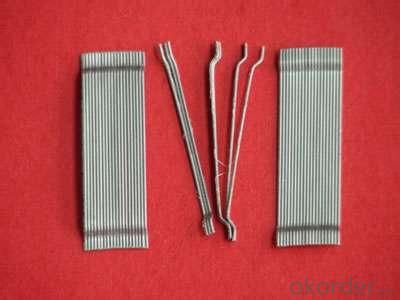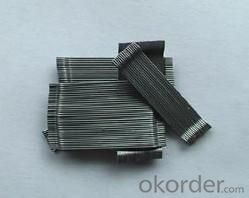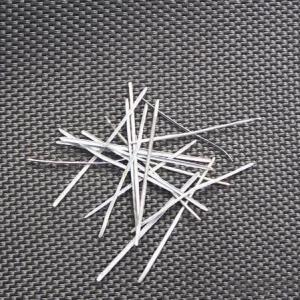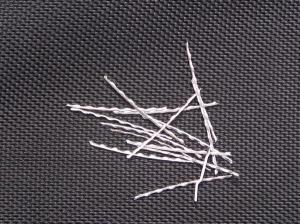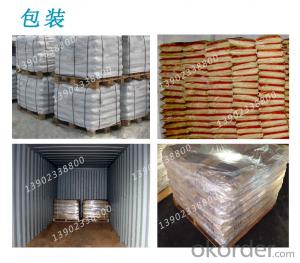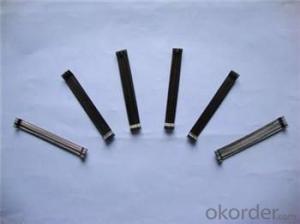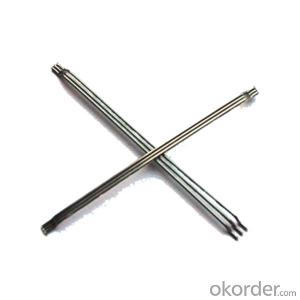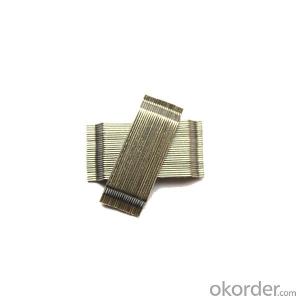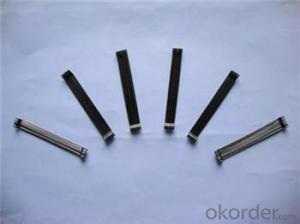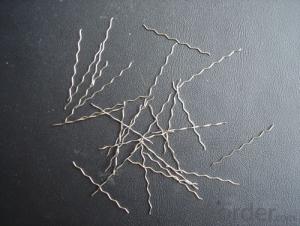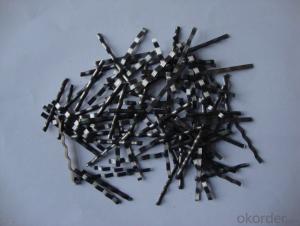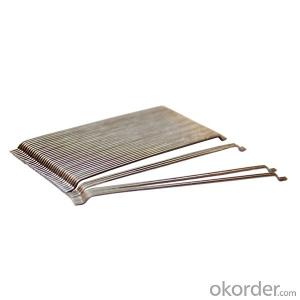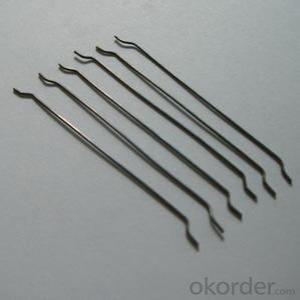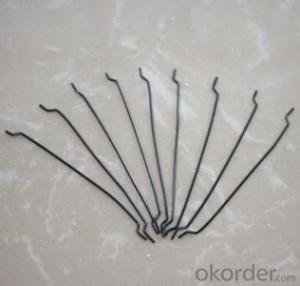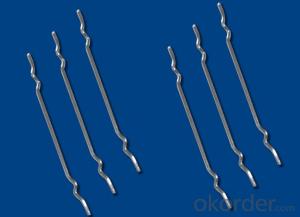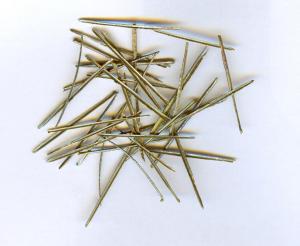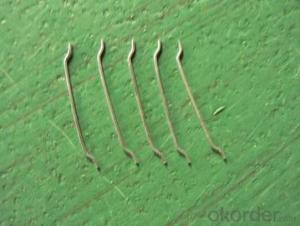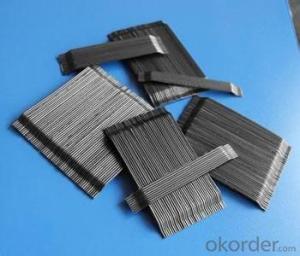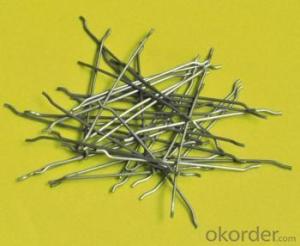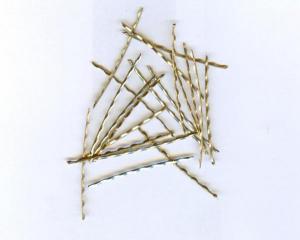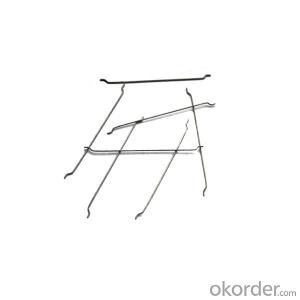Melt Extract Stainless Steel Fiber Glued for Construction CNBM China
- Loading Port:
- Tianjin
- Payment Terms:
- TT OR LC
- Min Order Qty:
- 2000 kg
- Supply Capability:
- 250000 kg/month
OKorder Service Pledge
OKorder Financial Service
You Might Also Like
Quick Details
Place of Origin: Shandong, China (Mainland), Shandong, China (Mainland)
Model Number: GLUED, glued steel fiber
Material: Steel
type: steel fiber for concrete reinforcement
material: steel wire
shape: glued together in a row
appearance: clear and bright
Product features
glued steel fiber together in a row ,is used with cement for construction
oncrete steel fiber is specifically to enhance concrete in its hardened state ,the uniform distribution of steel fiber throughout the concrete greatly improve concrete bonding and tensile strength ,additionally it provides exceptional load stability and durability ,as reliable and efficient concrete reinforcement material
it is widely ued in buildings ,bridges ,thin roo engineering ,highway etc.
Specifications
length :20-60mm
diameter :0.5MM-1.2MM
tensile strengh:>1100Mpa
| diameter | length | tensile strength | |
| 0.5mm | 35mm | 1100Mpa | |
| 0.75 | 60mm | 1100Mpa | |
| 0.9 | 60m | 1100Mpa |
Picture
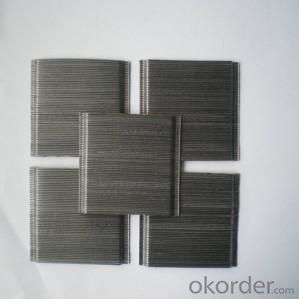
FAQ
we can produce any type steel fiber and of course we can make production according to your requirement
we have specilize in this field for almost 10 years ,with good quality and competitive price
- Q: Can melt extract stainless steel fiber be used in thin concrete sections?
- Indeed, it is possible to employ melt extract stainless steel fiber in thin concrete sections. By incorporating stainless steel fibers into such sections, the mechanical properties and overall performance of the concrete can be significantly improved. These fibers effectively reinforce the concrete, bolstering its resistance to cracking and shrinkage. This becomes particularly crucial in thin sections, where the concrete is more susceptible to these concerns. Furthermore, the presence of stainless steel fibers enhances the durability and lifespan of the concrete, rendering it suitable for diverse applications, including thin sections.
- Q: Can melt extract stainless steel fiber be used in railway sleepers?
- Certainly, melt extract stainless steel fiber is applicable for utilization in railway sleepers. Known for its exceptional resistance to corrosion and fatigue, stainless steel fiber serves as a robust material. By incorporating it into railway sleepers, the overall strength and longevity of the sleepers are significantly enhanced, rendering them suitable for heavy train loads and extended service life. The melt extract process guarantees the uniform and consistent shape of the stainless steel fibers, thereby further augmenting their performance and dependability. Moreover, the utilization of stainless steel fiber aids in the prevention of crack formation and improves resistance to thermal expansion and contraction, making it an ideal selection for railway sleepers.
- Q: What is the optimal fiber volume fraction for melt extract stainless steel fiber in concrete?
- The ideal fiber volume fraction for melt extract stainless steel fiber in concrete may vary depending on the particular application and requirements. However, it is generally recommended to use a fiber volume fraction ranging from 0.5% to 2%. Using lower fiber volume fractions, such as 0.5% to 1%, can enhance crack resistance and improve resistance against shrinkage and plastic settlement. These fibers effectively distribute and regulate cracks in the concrete, reducing the risk of crack propagation and enhancing the overall durability and performance of the concrete. On the contrary, higher fiber volume fractions, approximately 1.5% to 2%, can be advantageous in applications that demand higher tensile and flexural strength, such as industrial flooring or structures exposed to heavy loads and high impact forces. The increased fiber content reinforces the concrete matrix and improves its ability to withstand these types of stresses. It should be emphasized that the optimal fiber volume fraction for melt extract stainless steel fiber in concrete must be determined based on the specific project requirements, taking into account factors like the desired level of crack control, load conditions, and the properties of the concrete mix. Seeking advice from a structural engineer or concrete expert can assist in determining the most suitable fiber volume fraction for a given application.
- Q: How does melt extract stainless steel fiber affect the bond strength of shotcrete to substrate?
- Melt extract stainless steel fiber can significantly enhance the bond strength of shotcrete to the substrate. When added to the shotcrete mix, these fibers help to distribute the applied stresses more evenly, resulting in improved cohesion between the shotcrete and the substrate. The stainless steel fibers act as reinforcement within the shotcrete, providing additional tensile strength and reducing the likelihood of cracking or delamination. This reinforcement helps to create a stronger bond between the shotcrete and the substrate, increasing the overall bond strength. Furthermore, the unique properties of melt extract stainless steel fibers, such as their high aspect ratio, mechanical strength, and corrosion resistance, contribute to the improved bond strength. These fibers effectively interlock with the shotcrete matrix and the substrate, creating a strong and durable connection. By enhancing the bond strength, melt extract stainless steel fiber also improves the overall performance and durability of shotcrete applications. It allows for better load distribution, increased resistance to cracking, and improved resistance to environmental factors such as freeze-thaw cycles or chemical exposure. In summary, the addition of melt extract stainless steel fiber to shotcrete significantly improves the bond strength between the shotcrete and the substrate. This enhancement is due to the fiber's ability to distribute stresses, provide reinforcement, and interlock with the shotcrete matrix and the substrate. As a result, shotcrete applications with melt extract stainless steel fiber exhibit improved performance, durability, and resistance to various external forces.
- Q: Can melt extract stainless steel fiber be used in architectural concrete?
- Yes, melt extract stainless steel fiber can be used in architectural concrete. It offers improved strength, durability, and crack resistance to the concrete, making it suitable for various architectural applications.
- Q: Can melt extract stainless steel fiber be used in lightweight concrete?
- Melt extract stainless steel fiber is capable of being utilized in lightweight concrete, thereby enhancing its mechanical attributes. The incorporation of stainless steel fiber into concrete serves to augment its tensile strength, flexural strength, and impact resistance. Conversely, lightweight concrete is a concrete variant that integrates lightweight aggregates or foaming agents in order to decrease its density and enhance its thermal and acoustic characteristics. The addition of melt extract stainless steel fiber to lightweight concrete offers supplementary reinforcement and improves its performance. The stainless steel fibers facilitate the even distribution of stresses throughout the concrete matrix, thereby bolstering its resistance to cracking and strengthening its overall durability. Furthermore, the use of stainless steel fibers can heighten the ductility of lightweight concrete, enabling it to better withstand dynamic loads and mitigate the possibility of sudden failure. To summarize, melt extract stainless steel fiber represents a suitable choice for reinforcing lightweight concrete due to its ability to enhance its mechanical properties and bolster its durability.
- Q: How does the addition of melt extract stainless steel fiber affect the creep behavior of concrete?
- The addition of melt extract stainless steel fiber positively affects the creep behavior of concrete. Creep is the time-dependent deformation of concrete under a constant load, and it is a significant concern in structural applications as it can lead to long-term deformation and structural failure. When melt extract stainless steel fibers are incorporated into the concrete mix, they enhance the overall mechanical properties of the material. The fibers act as reinforcement, providing additional tensile strength and improving the concrete's resistance to cracking and deformation. The steel fibers also contribute to reducing the overall creep of concrete. They act as internal support, resisting the movement and redistribution of stresses within the concrete matrix. This reinforcement effect helps to distribute the applied load more evenly and reduces the potential for long-term deformation. Furthermore, melt extract stainless steel fibers improve the durability of concrete by increasing its resistance to environmental factors such as shrinkage, thermal cycling, and aggressive chemicals. This enhanced durability contributes to the long-term stability and performance of concrete structures. In summary, the addition of melt extract stainless steel fibers to concrete improves its creep behavior by enhancing its mechanical properties and reducing the potential for long-term deformation. This reinforcement effect leads to increased structural integrity and durability, making it an effective solution for applications where creep resistance is a concern.
- Q: Can melt extract stainless steel fiber be used in wastewater treatment plant construction?
- Yes, melt extract stainless steel fiber can be used in wastewater treatment plant construction. It is often utilized to reinforce concrete in various structures within the plant, such as tanks, pipelines, and basins. The stainless steel fiber enhances the durability and strength of the concrete, making it resistant to corrosion and other chemical attacks commonly found in wastewater environments.
- Q: What is the effect of melt extract stainless steel fiber on the durability of shotcrete?
- Using melt extract stainless steel fiber in shotcrete can greatly enhance its durability. Shotcrete, a popular construction material, is typically sprayed onto surfaces to create a strong and durable concrete layer. However, over time, shotcrete can crack and spall, especially in harsh environmental conditions or under heavy loading. By adding melt extract stainless steel fiber to the shotcrete mix, the material's overall durability is significantly improved. These fibers act as reinforcement, providing extra strength and crack resistance to the shotcrete. The stainless steel fibers distribute stress and prevent cracks from forming and spreading, thereby enhancing the shotcrete's overall durability and lifespan. The special properties of melt extract stainless steel fibers make them ideal for shotcrete applications. They have high tensile strength, allowing them to effectively resist cracks. Additionally, stainless steel fibers have excellent corrosion resistance, even in aggressive environments, further enhancing the shotcrete's durability. The addition of melt extract stainless steel fibers also enhances the shotcrete's structural integrity. The fibers increase the material's flexural and shear strength, making it more resistant to loading and impact forces. This improved structural integrity ensures that the shotcrete can withstand heavy loads, vibrations, and other external forces without significant damage. Overall, incorporating melt extract stainless steel fiber in shotcrete significantly improves its durability by enhancing crack resistance, corrosion resistance, and structural integrity. This leads to a longer lifespan and reduced maintenance requirements for shotcrete structures, making it a highly beneficial addition to the construction industry.
- Q: How does melt extract stainless steel fiber affect the workability of shotcrete?
- Melt extract stainless steel fiber improves the workability of shotcrete by enhancing its cohesion and reducing the occurrence of segregation. The fibers act as reinforcement, increasing the tensile strength and ductility of the shotcrete, thereby reducing the risk of cracking and improving its overall performance.
Send your message to us
Melt Extract Stainless Steel Fiber Glued for Construction CNBM China
- Loading Port:
- Tianjin
- Payment Terms:
- TT OR LC
- Min Order Qty:
- 2000 kg
- Supply Capability:
- 250000 kg/month
OKorder Service Pledge
OKorder Financial Service
Similar products
Hot products
Hot Searches
Related keywords


